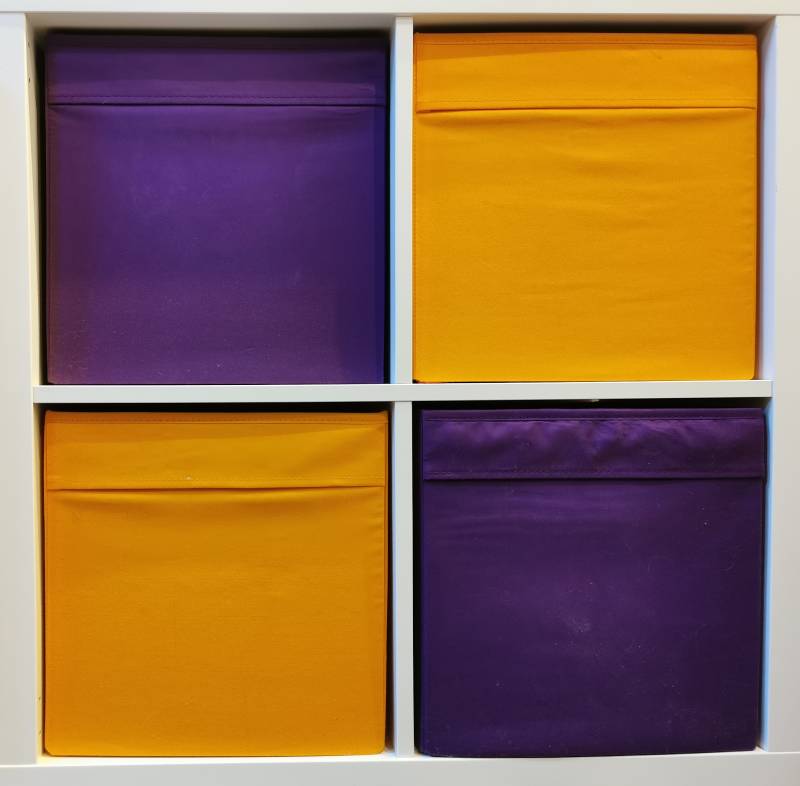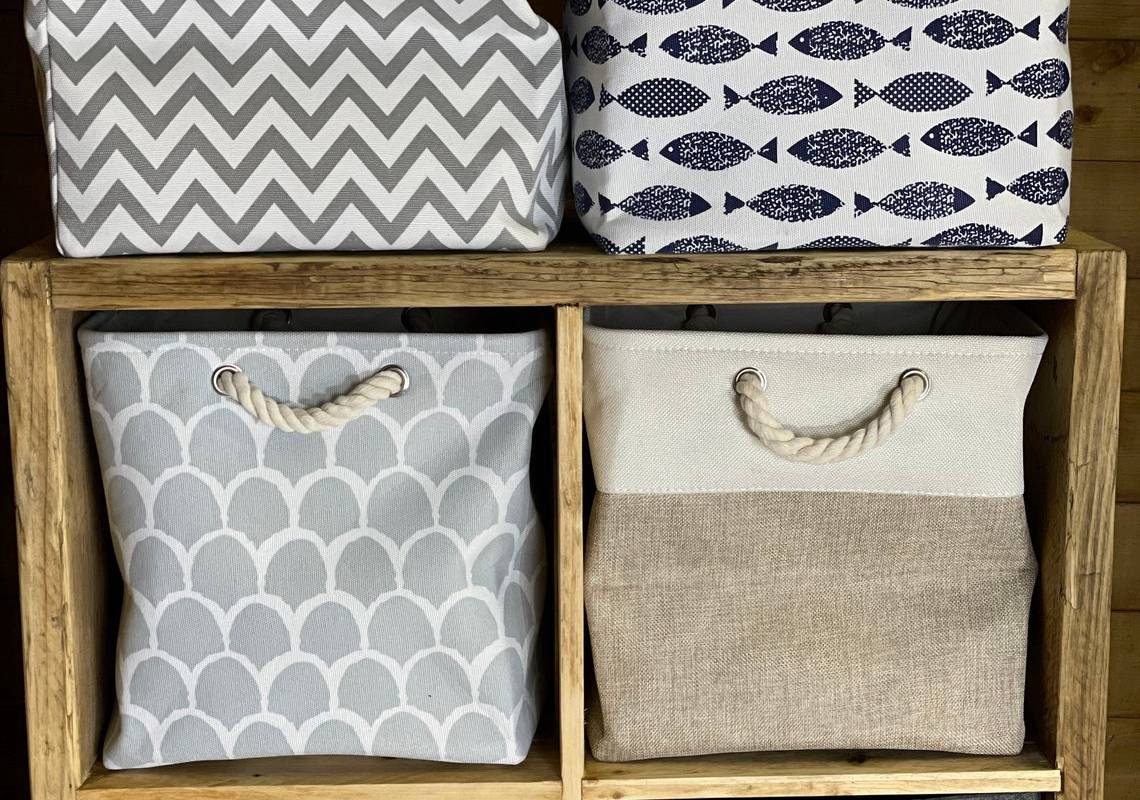Can You Put Clothes In Cube Storage? (Answered For You Here!)
While dressers were a great choice about 400 years ago when they were invented, today there are many finer options. Moreover, if you like saving space or smart organization, the better choice is cube storage.
But aren’t cubes for storing gaming accessories and knick-knacks? Can you put clothes in cube storage?
Yes, you can store all types of clothes from shirts to pants, inners, and belts in storage cubes. They aren’t just for bits and bobs. Cube boxes or cubbies also save space, reduce clutter, and offer better access than traditional dresser drawers.
Read on to discover the advantages of storage cubes and the tricks for organizing different types of clothes cubbies in the right way! Let’s start packing!
5 Reasons to use cube storage organizer for your clothes
You can use a cube organizer to arrange all your clothes. To be honest, storage cubes are the new normal no matter where you go. From office cabins to bedrooms, living rooms, and even bathrooms, they’re everywhere.
And why skip them? Cubbies are great and come with numerous advantages, as I’ll point out below.
Versatile
I personally invested in cube storage solutions when I saw their potential for new decor. For instance, you can stack them atop each other, add them to cabinets, or fill up your bookshelves.
They can also be repurposed into laundry basket, nightstands, TV cabinets, home bars, and many more things when you’re not using them for storing clothes. Apart from all that, you can even fit drawers inside these to make them look grand.
Accessible
Unlike dressers that you’ve to rummage through to get around to what you’re searching for, cubbies make everything easy to access. That’s mainly because they’re open-faced and removable.
Nonetheless, you can even pull out a box and sort out your needs instead of having to dig in the dark.
Wide range of choices
There are endless options for colors, sizes, and models when it comes to cube storage solutions. As a result, it’s easy to mix and match different cubes to create an entirely new storage solution. The best thing is you can even get storage cubes that are transparent and see-through nowadays.
Affordable
A well-made dresser costs a few hundred dollars on the lower range, but a cube storage box is just a few dollars. Moreover, you don’t need to invest in a huge wardrobe or cabinet if you opt for storage cubes. You can start small and keep buying to make an even grander wardrobe with cubbies at the end.
Convenient
Storage cubes and bins are easy to stow, carry, or move around as opposed to dressers. On top of it, they’re safe for kids, thanks to their lightweight nature.
What type of clothes can you put in storage cubes?

You can put all the different types of clothes in cube storage, from shirts to pants, dresses, innerwear, bags, hats, and even shoes.
I particularly love cubbies for their classy looks, mainly how they help me organize my closet smartly. What’s more, cube storage boxes are available in lightweight materials like canvas, plastic, jute, etcetera. This way, you can use different types of cubbies for additional storage options.
Moreover, cubbies are available in several diverse dimensions from small to medium, large, and extra-large options too.
How do you store clothes in a cube box?
While the best way to store clothes in a cube organizer is vertical, you can also store them rolled neatly for easy accessibility. Hence, cube boxes offer several ways to organize clothes, unlike dressers or cabinets.
How to organize clothes in a cube organizer? I’ll share a set of rules below that will help you get started.
Like goes with like
First off, don’t mix different clothing items together in one box. For example, all the shirts go in one box, pants in another, extra linens in yet another cubby, and so on.
On the contrary, mixing up just adds to the mess. For instance, you’ll end up cluttering the whole wardrobe whenever you’re searching for a shirt or a dress if they’re mixed up together.
Label the boxes
In addition to the last point, you can even name storage boxes based on what’s inside to take your organization skills a notch up. If you want to go the extra mile, go ahead and list the items inside the box with a tag or sticky note outside too.
Vertical organization
Most of us have always folded clothes horizontally and stacked them atop each other. But this method backfires almost immediately when you’re searching for a clothing item. For that reason, it’s a bad option.
Since I’ve been following Marie Kondo’s Konmari method, I’ve been arranging all my clothes vertically. Truth be told, it works for dresses too!
Here’s a video from Marie showing how to fold different clothing items vertically:
Roll it up
When it comes to T-shirts, knitwear, underwear, and socks, nothing beats rolling your clothes. It’s simple, neat, and saves space too!
This video will teach you how to roll clothes easily:
Give space where needed
I’d suggest you always use small cubes for storing innerwear spaciously. While you can stack and roll almost everything, my wife says it’s a terrible choice for innerwear like padded or molded bras. This way, you can lay out bras side by side instead of folding them.
As a bonus tip, don’t crush your innerwear to make space, and you’ll thank me when you’re looking for it the next time.
Start organizing all your clothes in cubes NOW
Storage cubes are an ideal solution for organizing shirts, knitwear, pants, innerwear, hats, and even boots. All you need to do is get different sizes of cubbies to fit all your varied needs.
What I love most about them is there are so many innovative ways to transform these cubes and shelves into attractive modern furniture. When you start considering the advantages of these boxes, the pros definitely outweigh the cons.
Here’s my personal best tip: you can even install legs on cubbies to transform them into fully-fledged furniture!
Source
- Ezpacking.com: Best Ways to Organize Your Closet
- RTA Cabinet Reviews: Which is Better for Your Clothes? Cube Storage vs. Dresser Drawers
- Featured image: LadderShelf via Etsy







